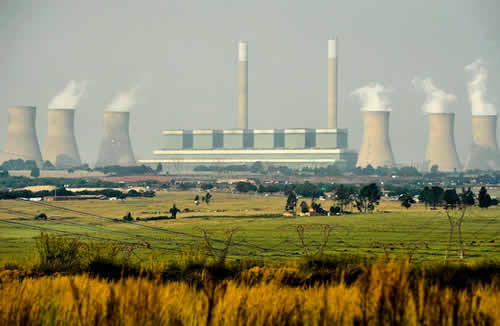THE HISTORY OF WITBANK

Emalahleni, formerly Witbank, is situated on the highveld of Mpumalanga, South Africa. The name Witbank is Afrikaans for "White Ridge" and is named after a white sandstone outcrop where wagon transport drivers rested. Witbank Colliery was established by Samuel Stanford and the Neumann group in Zeraatsfontein (now called Leraatsfontein) and the name 'Witbank' was derived from a white quartz outcrop, which according to Thomas Baines, "loomed like a wagon tent in the distance'.
The town was laid out by Witbank Colliery in 1903 and Samuel Stanford erected the first wood and iron building consisting of a shop and hotel.
In March 2006, the town was renamed Emalahleni, the Nguni word for "the place of coal". eMalahleni is in the coal mining area with 22 collieries in an area no more than 40 km in any direction. There are a number of power stations (such as the Duvha Power Station), as well as a steel mill, Highveld Steel and Vanadium Corporation, nearby which all require coal.
Witbank was established in 1890 and early attempts to exploit the coal deposits failed until the railway from Pretoria reached the area in 1894. It was proclaimed a town in 1903 and became a municipality in 1914 .
Witbank is s ituated approximately 120km from Johannesburg and 100km from Pretoria, heading eastwards on the Maputo Economic Corridor. Witbank is the energy centre of South Africa and the focal point of Africa's largest coalfields, power stations and steel manufacturing.
http://en.wikipedia.org
During the mid 1800's farmers settled in the Highveld and began mining coal from outcrops in riverbeds for cooking and heating purposes. Witbank grew from a wild mining camp into a city in an 88-year period and developed not only coal mining but incorporating steel manufacturing, power generation and professional services, as well as the informal sector. The collieries presently in operation mostly use the opencast mining method due to the proximity of coal close to the surface.
Railway lines to Richards Bay and Johannesburg were added to those from Pretoria and Maputo, (Lourenco Marques) and excellent road run between all major cities and centres within and outside the province. Witbank Dam is the biggest municipal dam in the southern hemisphere.
|
 |
Winston Churchill, then a young soldier-journalist, hid in a colliery near Witbank after his escape from Pretoria during the Second Boer War.

